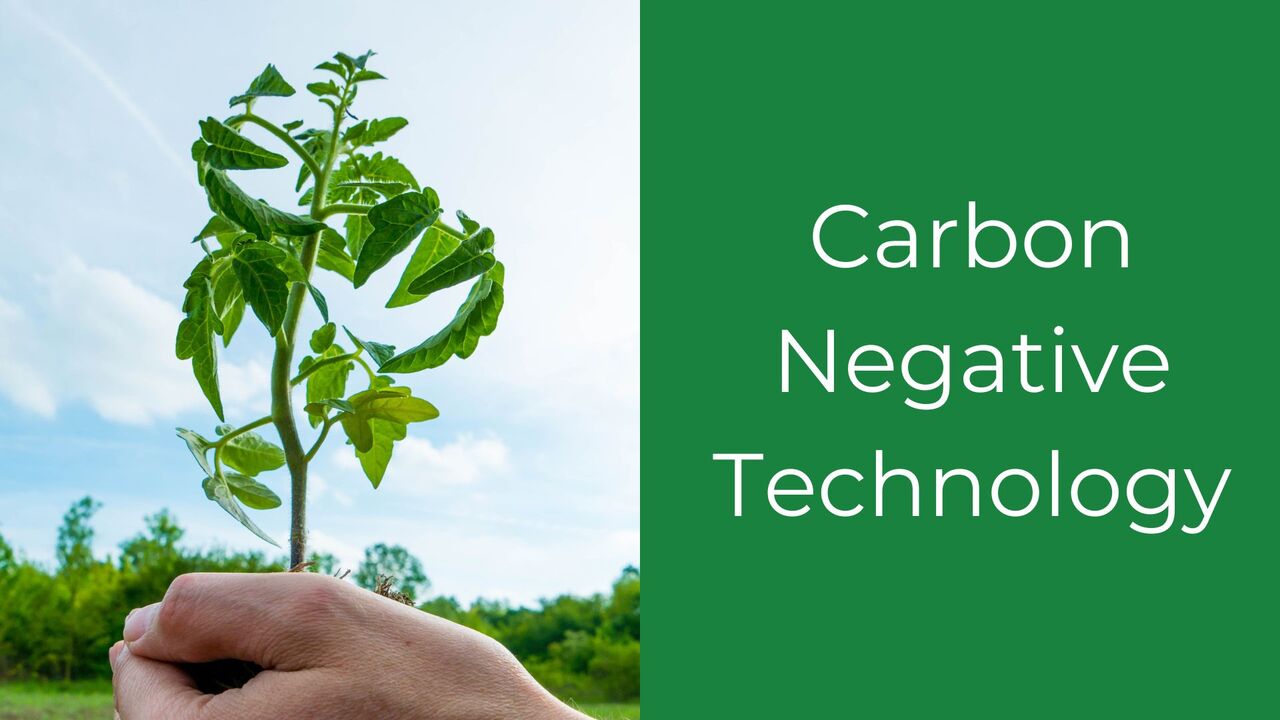Revolutionizing Sustainability: Exploring Carbon Negative Technology Solutions

In today's rapidly changing world, the pursuit of sustainable solutions has become more critical than ever before. One of the most promising innovations in the fight against climate change is Carbon Negative Technology. This article aims to delve into the concept of Carbon Negative Technology, its significance in addressing environmental challenges, and the transformative impact it can have on our planet.
1. Definition of carbon negative technology
Carbon Negative Technology actively removes more carbon dioxide (CO2) from the atmosphere than it emits. By reducing the overall atmospheric carbon concentration, it combats the greenhouse effect and its consequences.
As our world faces pressing environmental issues, the importance of sustainable solutions cannot be overstated. Rising greenhouse gas emissions, deforestation, and unsustainable practices have led to climate change, resource depletion, and biodiversity loss. Embracing sustainable solutions, such as Carbon Negative Technology, is crucial for mitigating these challenges and safeguarding the well-being of current and future generations.
2. What are the differences between carbon negative and carbon neutral
Carbon Neutral
Carbon Neutral refers to a state where the total amount of CO2 emissions released into the atmosphere is balanced or offset by an equivalent amount of CO2 removal or reduction. This can be achieved through activities such as planting trees (afforestation), investing in renewable energy projects, or utilizing carbon offsets. While carbon neutrality helps prevent an increase in atmospheric carbon levels, it does not actively decrease the existing carbon concentration.
Carbon Negative
In contrast, Carbon Negative Technology goes beyond carbon neutrality by actively removing more CO2 from the atmosphere than it emits. By achieving a negative carbon footprint, these solutions play a vital role in directly combating climate change. Carbon Negative Technology is a key component of climate action plans to limit global temperature rise and maintain a stable and habitable planet for future generations.
3. Types of carbon negative technology
Carbon Capture and Storage (CCS):
Carbon Capture and Storage (CCS) is a technology that involves capturing carbon dioxide emissions from industrial processes or power plants before they are released into the atmosphere. The captured CO2 is then transported to a storage location, usually deep underground, where it is stored in geological formations, such as depleted oil and gas fields or saline aquifers. By preventing CO2 from entering the atmosphere, CCS helps reduce greenhouse gas emissions and combat climate change.
Direct Air Capture (DAC):
Direct Air Capture (DAC) is a technology that directly removes carbon dioxide from the ambient air. This process involves large-scale machines equipped with chemical sorbents that selectively capture CO2 from the air passing through them. Once captured, the CO2 is separated and stored for long-term sequestration. DAC offers the potential to remove CO2 from the atmosphere even in locations without point sources of emissions, making it a versatile tool for carbon removal.
Bioenergy with Carbon Capture and Storage (BECCS):
Bioenergy with Carbon Capture and Storage (BECCS) is a unique combination of biomass utilization and CCS. It involves using organic materials, such as agricultural waste or purpose-grown energy crops, to produce bioenergy through processes like combustion or gasification. The CO2 emissions generated during the bioenergy production are captured using CCS technology and stored underground. Since the biomass absorbs CO2 as it grows, the overall process results in a net removal of CO2 from the atmosphere, making BECCS a potentially carbon-negative energy solution.
Nature-Based Solutions:
Nature-Based Solutions refer to various strategies that harness the power of natural ecosystems to remove and store carbon dioxide. These solutions include activities such as afforestation (planting trees in deforested areas), reforestation (restoring degraded forests), and sustainable land management practices. Healthy ecosystems act as carbon sinks, absorbing CO2 from the atmosphere and storing it in trees, plants, soil, and marine environments. Nature-Based Solutions not only contribute to carbon sequestration but also provide co-benefits like biodiversity conservation, ecosystem restoration, and climate resilience.
These four types of Carbon Negative Technology showcase a diverse range of approaches in actively combating climate change by reducing the atmospheric concentration of CO2 and fostering a more sustainable and resilient future.
4.AirX Coffee Carbon Negative Biobased Materials
AirX, purchasing the purpose of providing high-quality plant-based carbon-negative products, always searching and innovating the technique of bio-based product manufacturing. 
AirX carbon negative cups
We offer a unique product made from coffee grounds sourced from prominent restaurants and cafes. These raw materials undergo careful processing and treatment within a closed-loop system, ensuring minimal CO2 emissions are released to the outside environment.
Who should choose our Coffee Bio-composite products?
- Individuals interested in eco-friendly and environmentally conscious products
- Businesses and partners seeking commemorative products and gifts for customers
- Partners interested in collaborating with AirX to manufacture their own products
- OEM (Original Equipment Manufacturer) or ODM (Original Design Manufacturer)
>>>Learn more: AirX Carbon Negative Plastics vs Traditional Platics
Contact us
AirX is the world’s first carbon-negative bio-material made from coffee grounds manufacturer. 
We specialize in producing bio-based composites using recycled carbohydrates derived from by-products such as coffee grounds, coconut husk, husk, and bamboo. Our goal is to promote sustainability through the use of eco-friendly materials.
We are always here to help and provide the best service possible. If you have any questions or would like to receive advice and feedback directly from our sales staff, please do not hesitate to contact us. You can reach us through:
- Whatsapp: +84 969 742 950
- Email: [email protected]
We look forward to hearing from you!

